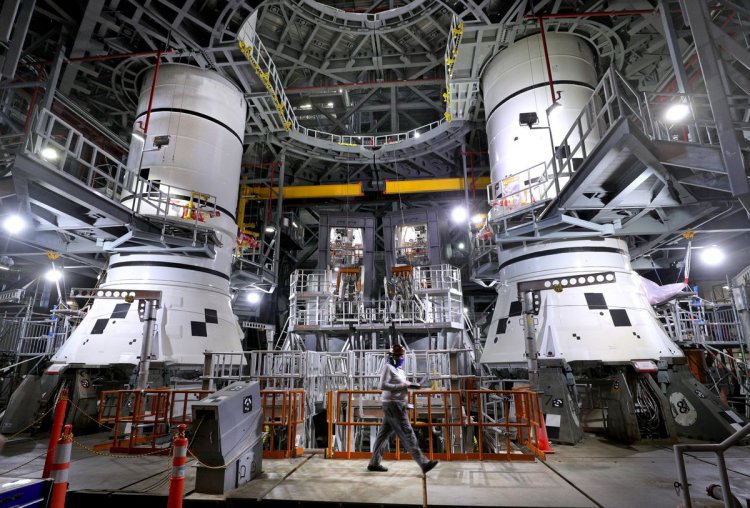

NASA halted the operation, while engineers scrambled to plug what was believed to be a gap around a seal in the supply line.Īn operations team tried three times to seal the “large leak,” but was unable to, Artemis mission manager Mike Serafin said during the news conference. But minutes later, hydrogen fuel began leaking from the engine section at the bottom of the rocket. NASA calls the program a boon to space exploration that has generated tens of thousands of jobs and billions of dollars in commerce.NASA will not attempt another liftoff during the current launch period, which ends Tuesday, Jim Free, NASA's associate administrator for exploration systems development, said during a news conference Saturday afternoon.Īs the sun rose over the launch pad, an over-pressure alarm sounded and the tanking operation was briefly halted, but no damage occurred and the effort resumed.

NASA's Office of Inspector General has projected total Artemis costs at $93 billion by 2025. More than a decade in development with years of delays and budget overruns, the SLS-Orion spacecraft has so far cost NASA least $37 billion, including design, construction, testing and ground facilities. Sending astronauts to Mars, an order of magnitude more challenging than lunar landings, is expected to take at least another decade and a half to achieve. The spacecraft also is set to release a payload of 10 miniaturized science satellites, called CubeSats, including one designed to map the abundance of ice deposits on the moon's south pole, where Artemis seeks to eventually land astronauts. The heat shield is designed to withstand re-entry friction expected to raise temperatures outside the capsule to nearly 5,000 degrees Fahrenheit (2,760 degrees Celsius). If the mission succeeds, a crewed Artemis II flight around the moon and back could come as early as 2024, followed within a few more years by the program's first lunar landing of astronauts, one of them a woman, with Artemis III.īilled as the most powerful, complex rocket in the world, the SLS represents the biggest new vertical launch system NASA has built since the Saturn V of the Apollo era.Īlthough no people were aboard, Orion carried a simulated crew of three - one male and two female mannequins - fitted with sensors to measure radiation levels and other stresses that astronauts would experience.Ī top objective is to test the durability of Orion's heat shield during re-entry as it hits Earth's atmosphere at 24,500 miles (39,429 km) per hour, or 32 times the speed of sound, on its return from lunar orbit - much faster than re-entries from the space station. Its first voyage is intended to put the vehicle through its paces in a rigorous test flight, pushing its design limits to prove the spacecraft is suitable to fly astronauts. Getting the SLS-Orion spacecraft off the ground was a key hurdle for the ambitious Artemis program. The capsule is expected to splash down at sea on Dec. "We are all part of something incredibly special, the first launch of Artemis, the first step in returning our country to the moon and on to Mars," she said to applause. It was so bright, so loud, you could feel it," said NASA astronaut Jessica Meir, among those who could be selected for a future Artemis crew.Īddressing mission control moments after liftoff, Artemis launch director Charlie Blackwell-Thompson saluted the hard work of her colleagues. The rocket's thunder shook the space center as a throng of spectators cheered and screamed with excitement. The Artemis I countdown climaxed with the rocket's four main R-25 engines and its twin solid-rocket boosters roaring to life, producing 8.8 million pounds of thrust that sent the spacecraft streaking skyward and lighting up the night sky over Florida's central Atlantic space coast. The new moon program has enlisted commercial partners such as Elon Musk's SpaceX and the space agencies of Europe, Canada and Japan to eventually establish a long-term lunar base as a stepping stone to even more ambitious human voyages to Mars. But Apollo, born of the Cold War-era U.S.-Soviet space race, was less science-driven than Artemis.

Twelve astronauts walked on the moon during six Apollo missions from 1969 to 1972, the only spaceflights yet to place humans on the lunar surface. Named for the ancient Greek goddess of the hunt - and Apollo's twin sister - Artemis aims to return astronauts to the moon's surface as early as 2025.


 0 kommentar(er)
0 kommentar(er)
